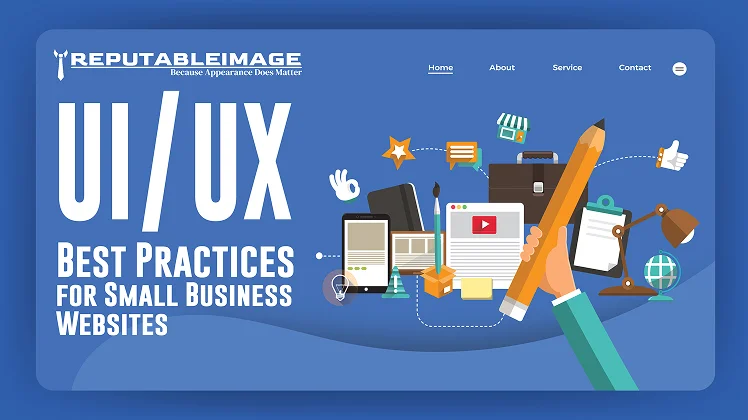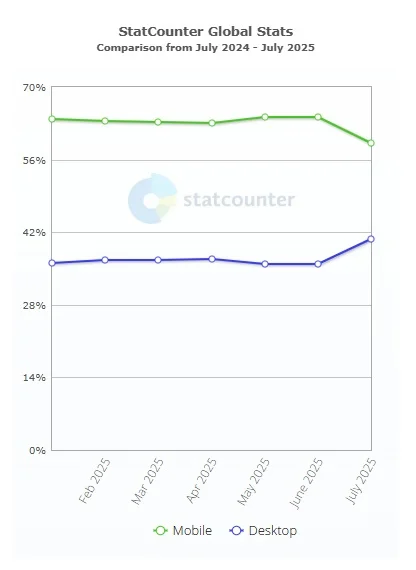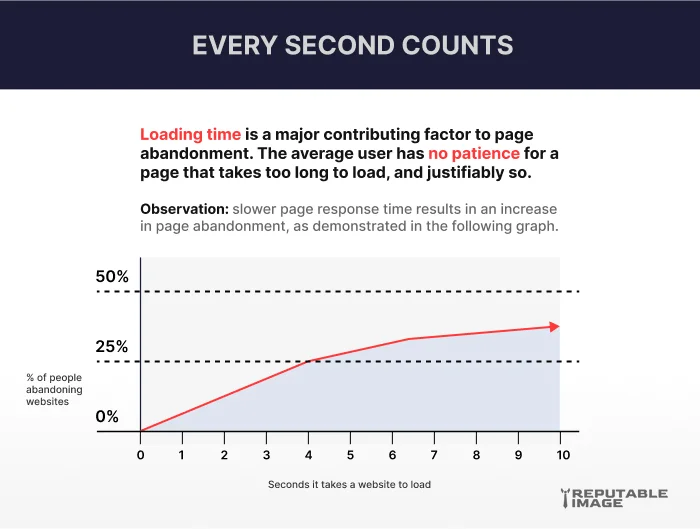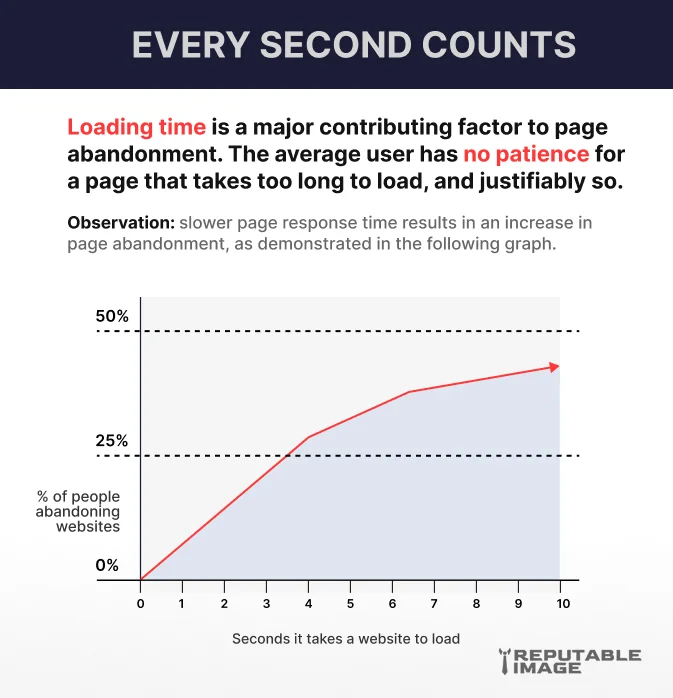
UI/UX Best Practices
for Small Business Websites
Small businesses often struggle with high bounce rates and low conversion because their sites aren’t intuitive or user-friendly. Employing solid UI/UX best practices solves these pain points, fosters trust, and ultimately drives sales. In this post, we’ll explore key design principles, the problems they address, and the lasting benefits for your bottom line.
Why UI/UX
Matters for Small Businesses
Users form an opinion about your website in less than a second, and poor design can send them elsewhere instantly. A seamless UI/UX reduces confusion, builds credibility, and shortens the path from arrival to action. When visitors find what they need quickly, they’re more likely to convert and return.
1. Clear Navigation
and Information Hierarchy
A confusing menu or buried calls-to-action frustrates users and increases bounce. Structure your navigation with clear labels—Home, Services, About, Contact—and keep important links within one or two clicks. Use headings (H2, H3) and visual cues (buttons, icons) to guide the eye and highlight key actions.
2. Mobile-First, Responsive Design
As of today, over half of web traffic now comes from mobile devices. [1] If your site isn’t optimized for smartphones and tablets, you’ll lose visitors instantly. Responsive layouts adapt to screen sizes, ensuring tap-friendly buttons and legible text. A mobile-first approach — designing for small screens before scaling up — guarantees a great experience across devices.

3. Readable Typography and
Consistent Branding
Tiny fonts or clashing colors make content hard to digest, while inconsistent branding undermines professionalism. Choose a legible typeface with sufficient line spacing and contrast. Maintain a cohesive color palette and style guide to reinforce your brand identity and make every animal page feel familiar.
Did you get that? No? Did it feel weird? Did you think it was a mistake? Did you skip it? Yeah, I bet it was a pain to read. Well, here it is again but with a normal font face, size, and colors that are consistent with our brand...
"Tiny fonts or clashing colors make content hard to digest, while inconsistent branding undermines professionalism. Choose a legible typeface with sufficient line spacing and contrast. Maintain a cohesive color palette and style guide to reinforce your brand identity and make every page feel familiar."
To completely drive the point home, I bet you didn't even get to spot the mistake in the green text. It wasn't a mistake, it was a reading test; just to show you that people tend to ignore hard to read text, the brain decides it's too much work and subconsciously ignores it. You have to consciously force yourself to finish reading the sentence.
4. Fast Load Times and Performance
This is the part that a lot of small business owners tend to ignore. Slow pages kill conversions. Every extra second of load time can cost you 7% in conversions. [2] Optimize images (compress and use modern formats), minify code, and leverage browser caching. A snappy site keeps users engaged and encourages them to explore more pages. We are working hard to decrease loading time with every page we make.


5. Engaging Visuals and Whitespace
A cluttered page overwhelms visitors, while strategic use of whitespace and high-quality visuals elevates content. Break up text blocks with relevant images, icons, or illustrations. Whitespace acts as a design element, giving the eye a place to rest and emphasizing important elements like buttons or quotes.
6. Intuitive Forms and CTAs
Lengthy or confusing forms lead to abandonment. Ask only for essential information and use inline validation to catch errors in real time. Design prominent, descriptive CTAs—“Get Your Free Demo” or “Book a FREE Consultaion”—so users immediately understand what happens when they click. For headline formulas and CTA copy that work with your layout, see Copywriting Strategies for Small Business Websites.
7. Accessibility and Inclusive Design
Ignoring accessibility not only limits your audience but can lead to legal risks and/or fines. Ensure your site meets basic WCAG standards: alt text on images, sufficient color contrast, keyboard‐navigable menus, and descriptive link text. Accessibility improves usability for all users, including those with disabilities.
Addressing Common Pain Points
- High Bounce Rates: Simplified navigation and faster load times keep users on your site.
- Low Conversions: Clear CTAs and streamlined forms guide users from interest to action.
- Brand Inconsistency: A unified style guide builds trust and recognition.
- Poor Mobile Experience: Responsive design retains on-the-go audiences.
- Difficulty Finding Info: Logical hierarchy and search functions make content easy to locate.
Long-Term Benefits of Good UI/UX
Investing in UI/UX from the start reduces future redesign costs by getting architecture and style right the first time. Happy visitors become repeat customers and brand advocates, lowering acquisition costs. Plus, search engines favor well-structured, fast, and mobile-friendly sites, boosting your SEO performance (see our post on the importance of Infographics for Small Business for more on content-driven SEO).
-
Wireframing: Use tools like Figma or Sketch to map out layouts before coding.
(We use Figma) - User Testing: Gather real feedback with services such as UserTesting or Hotjar.
- Performance Audits: Run Lighthouse reports in your browser's DevTools to spot speed bottlenecks.
- Style Guides: Document your typography, colors, and component library to ensure consistency.

Conclusion
Adopting these UI/UX best practices solves key pain points—confusion, slow performance, and low conversions—while laying the foundation for sustainable growth. At Reputable Image, we specialize in creating beautiful, user-centered designs that not only look great but also drive results.
👉 Ready to transform your online presence? Let us design a site that delights your customers and elevates your brand. If you need help with your current website or social media setup, we’re here for you.
At Reputable Image, we build clean, fast websites and connect them to your social channels. Contact Reputable Image today and let us handle the tech so you can focus on your business.
Sources:
[1] Stat Counter - Global Stats:
https://gs.statcounter.com/platform-market-share/desktop-mobile/worldwide
[2] Alex O'Byrne at We Make Websites:
https://www.wemakewebsites.com/blog/improve-page-load-speed-increase-conversion
[3] Therese Fessenden - Nielsen Norman Group (NN/G):
https://www.nngroup.com/articles/first-impressions-human-automaticity
